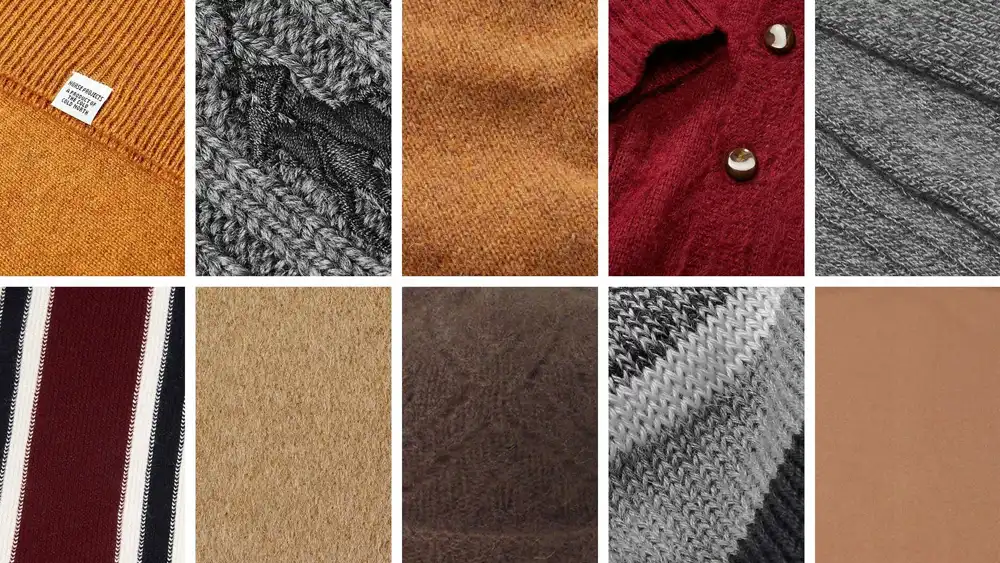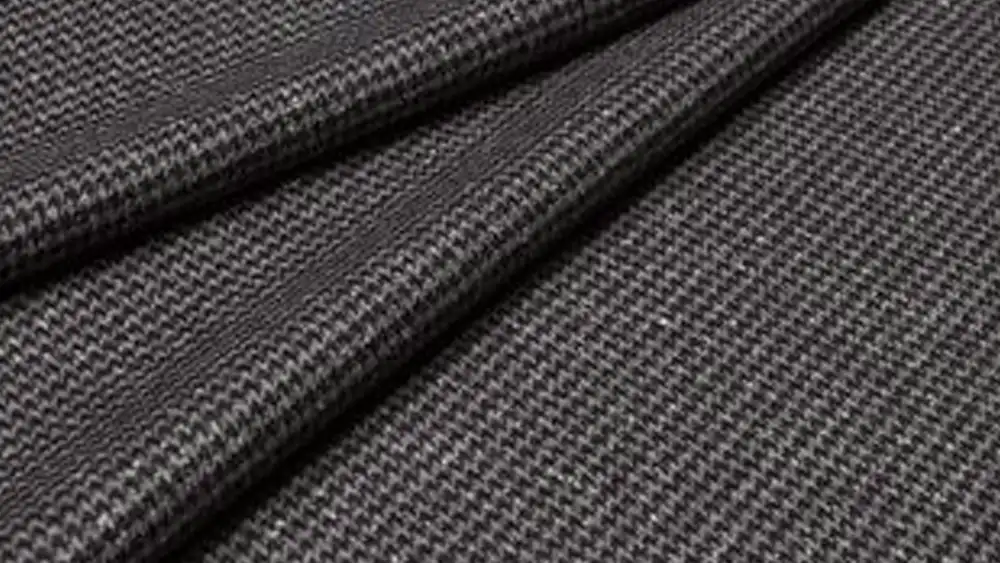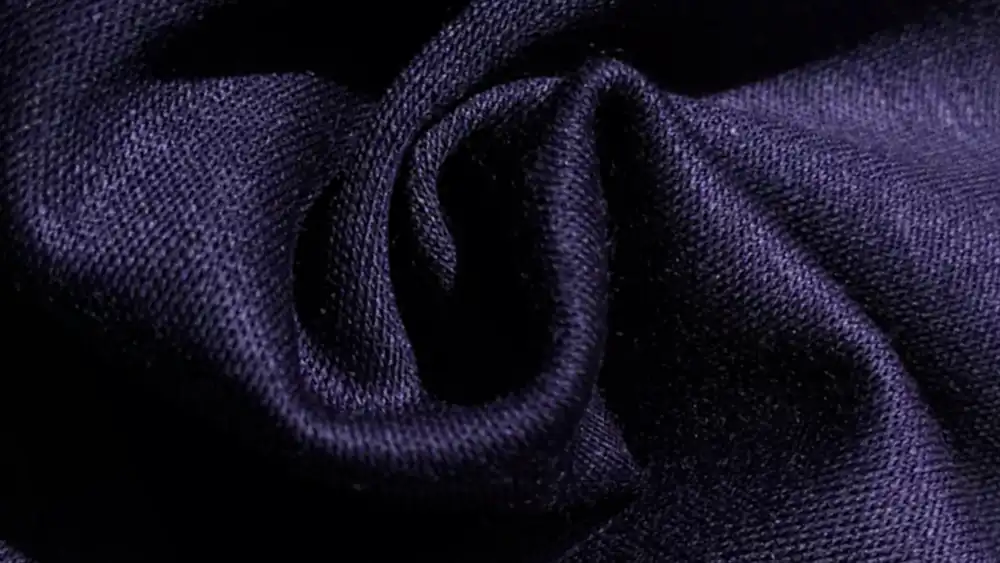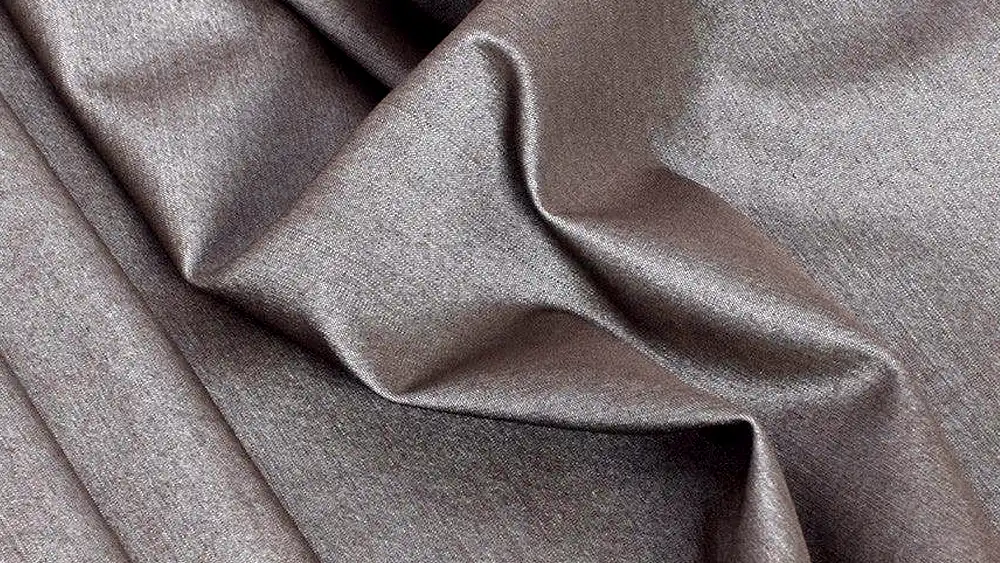Wool fabric has been a staple in clothing and textiles for centuries. Its unique properties make it a popular choice for various applications, from cozy sweaters to durable carpets. In this comprehensive guide, we’ll delve into the properties of wool fabric, its types, benefits, and much more.
What is Wool Fabric?
Wool fabric is derived from the fleece of sheep and other animals such as goats and rabbits.
Wool fabric is known for its natural warmth, moisture-wicking properties, and durability. Wool can be spun into yarn or felted to create different textures and densities.
Why Wool Fabric Matters
Wool fabric offers numerous benefits, both for consumers and the environment. Its natural properties make it an excellent choice for clothing, upholstery, and insulation. Additionally, wool is biodegradable and renewable, making it a sustainable choice compared to synthetic fibers.
Types of Wool Fabric

- Merino Wool: Known for its softness and fine fibers, Merino wool is highly prized for its comfort and versatility. It is often used in high-end clothing and activewear due to its excellent moisture-wicking properties.
- Cashmere: Derived from the soft undercoat of cashmere goats, cashmere wool is luxurious and incredibly soft. It is commonly used in premium sweaters, scarves, and shawls.
- Lambswool: Obtained from the first shearing of young sheep, lambswool is soft, elastic, and lightweight. It is ideal for garments and accessories that require warmth without bulkiness.
- Angora Wool: Produced from the fur of Angora rabbits, Angora wool is known for its silky texture and exceptional warmth. It is often blended with other fibers to enhance softness and insulation.
- Mohair: Mohair comes from the Angora goat and is valued for its luster, strength, and resilience. It is commonly used in upholstery fabrics, rugs, and high-fashion garments.
- Alpaca Wool: Alpaca wool is derived from the fleece of alpacas, native to South America. It is prized for its softness, warmth, and hypoallergenic properties, making it suitable for sensitive skin.
- Camel Hair: Camel hair wool is harvested from the soft undercoat of camels and is known for its insulating properties and durability. It is often blended with other fibers to create luxurious textiles.
Each type of wool fabric offers distinct characteristics and benefits, catering to a variety of preferences and needs.
Properties of Wool Fabric
Wool fabric possesses a range of unique properties that contribute to its popularity and versatility in various applications.
Here are some of the key properties of wool fabric:
Natural Insulation: Wool is an excellent insulator, providing warmth in cold weather while also regulating body temperature in warmer conditions. Its natural crimp and loft trap air pockets, creating an effective barrier against heat loss.
Moisture-Wicking: Wool fibers have a natural ability to absorb moisture vapor from the air or sweat from the body, keeping the wearer dry and comfortable. Unlike synthetic fibers, wool can absorb up to 30% of its weight in moisture without feeling damp.
Breathability: Wool fabric is highly breathable, allowing air to circulate and moisture to evaporate. This breathability helps prevent overheating and the buildup of odor-causing bacteria, making wool garments ideal for active wear and outdoor activities.
Odor Resistance: Wool has inherent antimicrobial properties that inhibit the growth of odor-causing bacteria, keeping garments fresh and odor-free even after prolonged wear. This natural odor resistance makes wool an excellent choice for socks, base layers, and sportswear.
Durability: Wool fibers are naturally resilient and elastic, allowing them to withstand repeated bending, stretching, and compression without losing their shape or strength. Wool garments are known for their durability and longevity, often outlasting synthetic counterparts.
Wrinkle Resistance: Wool fabric has a natural elasticity that helps it recover its shape and smooth out wrinkles, reducing the need for ironing or pressing. This wrinkle resistance makes wool garments convenient for travel and everyday wear.
Fire Retardancy: Wool is inherently flame-resistant, thanks to its high protein and moisture content. Unlike synthetic fibers, which melt and stick to the skin when exposed to fire, wool fibers char and extinguish quickly, reducing the risk of burns.
UV Protection: Wool fibers naturally absorb and scatter UV radiation, providing effective protection against harmful sun exposure. Wool garments offer built-in sun protection, making them ideal for outdoor activities and sunny climates.
Biodegradability: Wool is a renewable and biodegradable material derived from the fleece of sheep and other animals. Unlike synthetic fibers, which contribute to environmental pollution, wool decomposes naturally without releasing harmful toxins.
Softness and Comfort: Wool fabric is soft, lightweight, and gentle on the skin, making it comfortable to wear for extended periods. Its natural elasticity and resilience ensure a comfortable fit and freedom of movement.
These properties make wool fabric an excellent choice for a wide range of applications, including clothing, textiles, upholstery, and insulation. Whether you’re looking for warmth, breathability, durability, or sustainability, wool has you covered.
Wool Cotton Blend Fabric Properties

Wool cotton blend fabric combines the desirable properties of both wool and cotton fibers, resulting in a textile with unique characteristics and benefits. Here are some of the key properties of wool cotton blend fabric:
- Softness: The blend of wool and cotton creates a fabric that is soft to the touch, making it comfortable to wear against the skin. Unlike pure wool, which can sometimes feel scratchy, the addition of cotton enhances the overall softness of the fabric.
- Breathability: Cotton is known for its excellent breathability, allowing air to circulate freely through the fabric and wick away moisture from the body. When blended with wool, this breathability helps regulate body temperature, keeping the wearer cool and comfortable in warm weather.
- Insulation: Wool is a natural insulator, providing warmth by trapping air within its fibers. By blending wool with cotton, the fabric retains its insulating properties while also benefiting from the breathability of cotton. This makes wool cotton blend fabric suitable for a wide range of climates and seasons.
- Moisture Absorption: Cotton fibers have a high moisture absorption capacity, while wool fibers can absorb moisture vapor from the air. When combined in a blend, wool cotton fabric effectively absorbs moisture from the body and releases it into the surrounding environment, keeping the wearer dry and comfortable.
- Durability: Wool cotton blend fabric is durable and long-lasting, thanks to the strength and resilience of both wool and cotton fibers. The blend of fibers creates a fabric that is less prone to stretching, pilling, and wear compared to pure wool or cotton fabrics.
- Wrinkle Resistance: Cotton fibers are naturally resistant to wrinkles, while wool fibers have a natural elasticity that helps them retain their shape. As a result, wool cotton blend fabric is relatively wrinkle-resistant, requiring minimal ironing or pressing to maintain a neat appearance.
- Versatility: The combination of wool and cotton fibers allows for versatility in terms of texture, weight, and drape. Wool cotton blend fabric can range from lightweight and airy to heavier and more structured, depending on the ratio of wool to cotton and the weaving technique used.
- Easy Care: Wool cotton blend fabric is generally easy to care for, as it can be machine washed and dried with minimal shrinkage or distortion. However, it is essential to follow the care instructions provided by the manufacturer to ensure the longevity of the fabric.
Wool cotton blend fabric offers a balanced combination of comfort, breathability, warmth, and durability, making it suitable for a wide range of clothing and textile applications. Whether used in garments, upholstery, or home furnishings, wool cotton blend fabric provides the best of both worlds in terms of performance and versatility.
Merino Wool Fabric Properties

Merino wool fabric is renowned for its exceptional properties, making it a sought-after choice for a wide range of clothing and textile applications. Here are the key properties of Merino wool fabric:
- Softness: Merino wool is prized for its fine and soft fibers, which are much finer than traditional wool fibers. This results in a fabric that feels luxuriously soft and comfortable against the skin, making it ideal for next-to-skin garments like base layers and underwear.
- Warmth: Despite its lightweight and thin fibers, Merino wool is highly insulating, providing warmth in cold weather without adding bulk. The natural crimp of Merino fibers traps air, creating a thermal barrier that helps regulate body temperature and keep the wearer warm in cooler conditions.
- Breathability: Merino wool fabric is highly breathable, allowing moisture vapor to escape from the body while still retaining warmth. This breathability helps prevent overheating and the buildup of sweat, keeping the wearer dry and comfortable in a wide range of temperatures and activities.
- Moisture-Wicking: Merino wool has a unique ability to absorb moisture vapor from the skin and release it into the air, keeping the wearer dry and comfortable even during intense physical activity. Unlike synthetic fibers, which can feel clammy when wet, Merino wool retains its insulating properties when damp.
- Odor Resistance: Merino wool possesses natural antimicrobial properties that inhibit the growth of odor-causing bacteria, keeping garments smelling fresh even after prolonged wear. This odor resistance makes Merino wool fabric ideal for activewear, outdoor gear, and travel clothing.
- Temperature Regulation: Merino wool fabric adapts to changes in body temperature, helping to regulate heat loss and retention as needed. This thermoregulation feature makes it suitable for a wide range of outdoor activities, from hiking and skiing to running and cycling.
- Durability: Despite its fine texture, Merino wool is surprisingly durable and resilient, thanks to the unique structure of its fibers. It is naturally elastic and resistant to wrinkling, stretching, and tearing, ensuring that garments made from Merino wool fabric maintain their shape and integrity over time.
- UV Protection: Merino wool fibers naturally absorb and scatter UV radiation, providing effective protection against the sun’s harmful rays. Garments made from Merino wool fabric offer built-in sun protection, making them suitable for outdoor activities in sunny conditions.
- Biodegradability: Merino wool is a renewable and biodegradable material derived from the fleece of Merino sheep. Unlike synthetic fibers, which contribute to environmental pollution, Merino wool decomposes naturally without releasing harmful toxins, making it an eco-friendly choice.
Merino wool fabric combines unparalleled softness, warmth, breathability, and durability, making it a versatile and sustainable option for clothing, activewear, outdoor gear, and more.
Poly Wool Fabric Properties

Poly wool fabric, also known as polyester wool blend, combines the properties of polyester and wool fibers, resulting in a textile with unique characteristics suitable for various applications.
Here are the key properties of poly wool fabric:
- Durability: Polyester fibers are known for their strength and resilience, making poly wool fabric highly durable and long-lasting. The blend of polyester and wool enhances the fabric’s resistance to abrasion, tearing, and pilling, ensuring that garments made from poly wool fabric maintain their shape and integrity over time.
- Wrinkle Resistance: Polyester fibers are naturally resistant to wrinkles and creases, while wool fibers have a natural elasticity that helps them recover their shape. As a result, poly wool fabric is relatively wrinkle-resistant, requiring minimal ironing or pressing to maintain a smooth appearance.
- Softness: Wool fibers add softness and warmth to poly wool fabric, making it comfortable to wear against the skin. While polyester fibers can sometimes feel stiff, the addition of wool enhances the overall softness and tactile feel of the fabric, making it suitable for a wide range of clothing applications.
- Breathability: Wool fibers are naturally breathable, allowing air to circulate and moisture to evaporate from the skin. When blended with polyester, wool helps enhance the breathability of the fabric, ensuring that the wearer stays dry and comfortable even during physical activity or warm weather conditions.
- Insulation: Wool fibers have excellent insulating properties, providing warmth in cold weather by trapping air within their fibers. When combined with polyester, wool helps retain body heat while still allowing moisture to escape, making poly wool fabric suitable for both indoor and outdoor wear in cooler climates.
- Moisture-Wicking: Polyester fibers have low absorbency, while wool fibers can absorb moisture vapor from the skin and release it into the air. The blend of polyester and wool in poly wool fabric helps wick moisture away from the body, keeping the wearer dry and comfortable during intense physical activity or in humid conditions.
- Easy Care: Poly wool fabric is generally easy to care for, as it can be machine washed and dried with minimal shrinkage or distortion. Unlike pure wool, which requires special handling and care, poly wool fabric offers the convenience of easy maintenance, making it suitable for everyday wear.
- Versatility: The combination of polyester and wool fibers allows for versatility in terms of texture, weight, and drape. Poly wool fabric can range from lightweight and smooth to heavier and more textured, depending on the ratio of polyester to wool and the weaving technique used, making it suitable for a wide range of clothing and textile applications.
Poly wool fabric offers a balanced combination of durability, softness, breathability, and easy care, making it a practical and versatile choice for clothing, outerwear, upholstery, and more.
Here’s a comparison table highlighting the key properties of Merino wool, Cotton wool blend, and Poly wool fabric:
| Property | Merino Wool | Cotton Wool Blend | Poly Wool Fabric |
|---|---|---|---|
| Softness | Luxuriously soft | Soft | Soft |
| Warmth | Excellent insulation | Moderate insulation | Moderate insulation |
| Breathability | Highly breathable | Highly breathable | Moderately breathable |
| Moisture-Wicking | Excellent | Good | Good |
| Odor Resistance | Excellent | Moderate | Moderate |
| Durability | Moderate | Moderate | High |
| Wrinkle Resistance | Moderate | Moderate | High |
| UV Protection | Yes | No | No |
| Biodegradability | Yes | Yes | No |
This table provides a concise comparison of the key properties of Merino wool, Cotton wool blend, and Poly wool fabric, helping consumers make informed decisions based on their preferences and needs.
Conclusion
In conclusion, wool fabric continues to be a timeless choice for clothing, textiles, and home furnishings. Its natural properties, durability, and sustainability make it a preferred option for eco-conscious consumers. By understanding the properties of wool fabric and how to identify quality products, individuals can enjoy its benefits for years to come.
